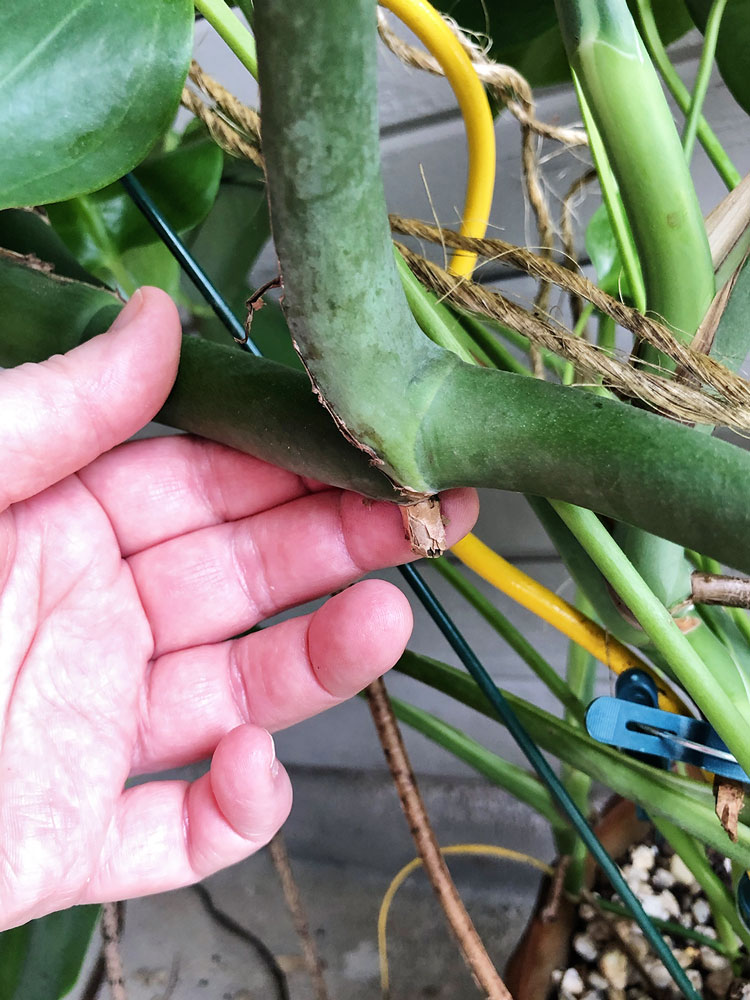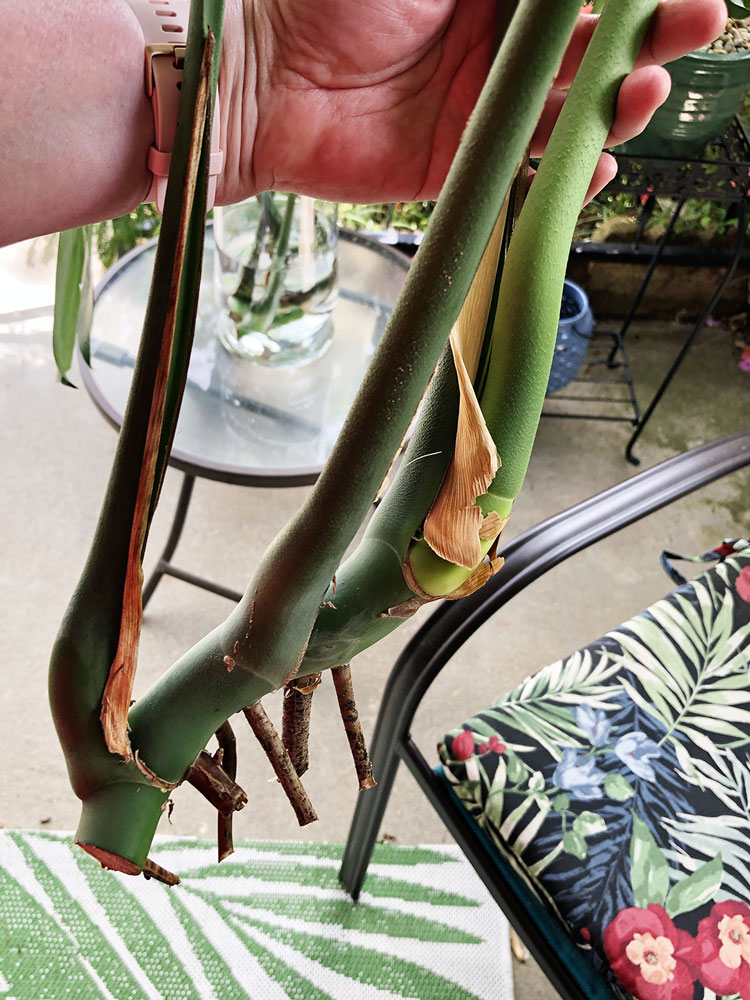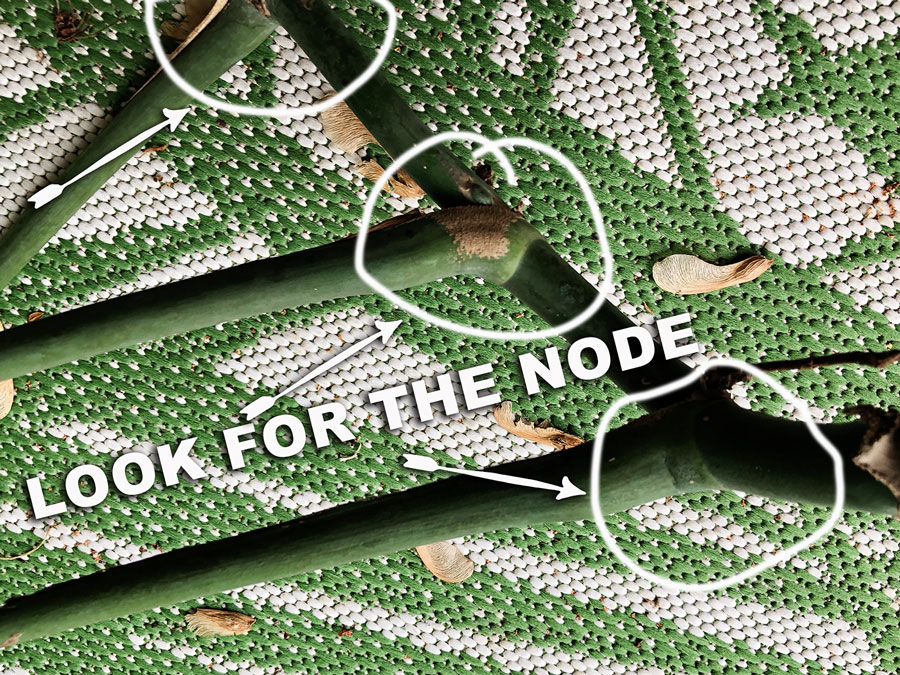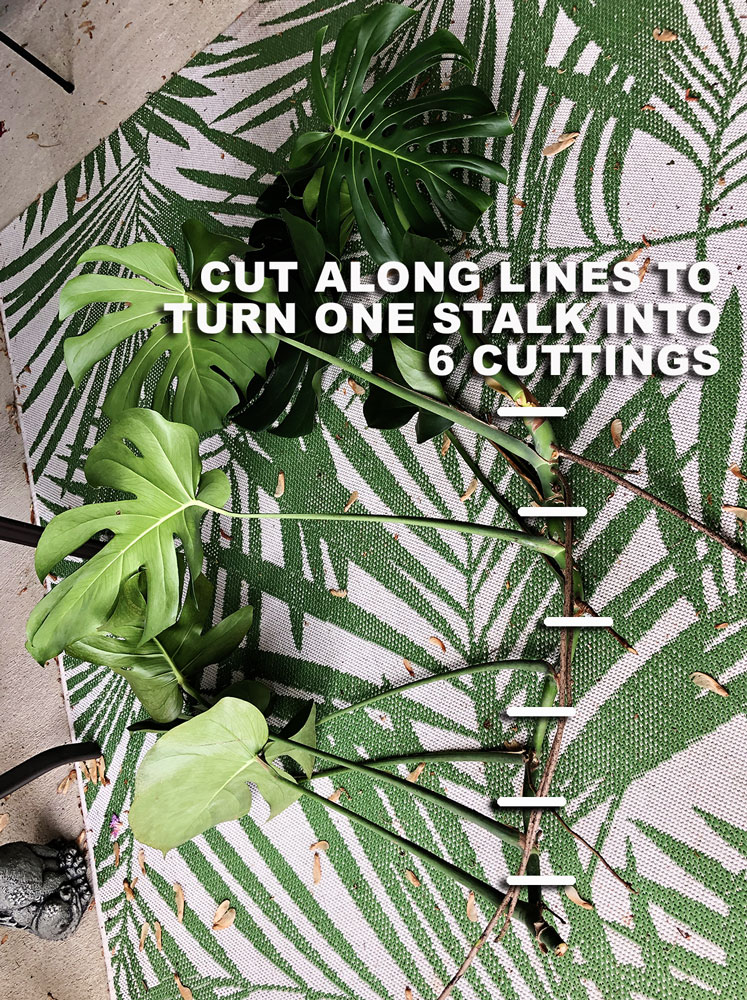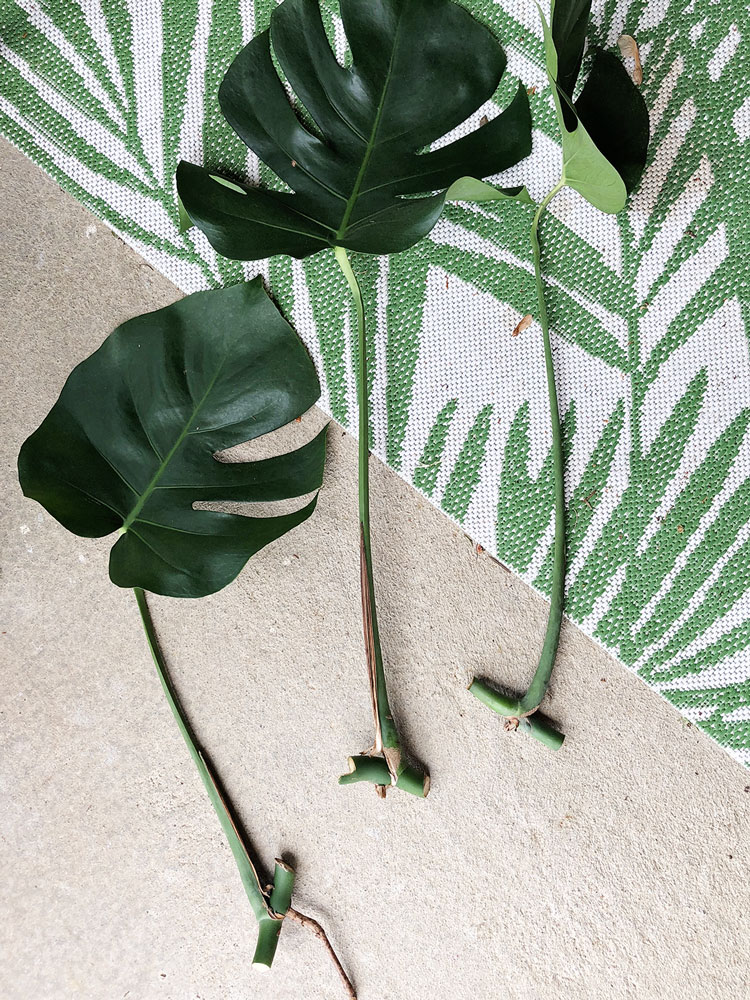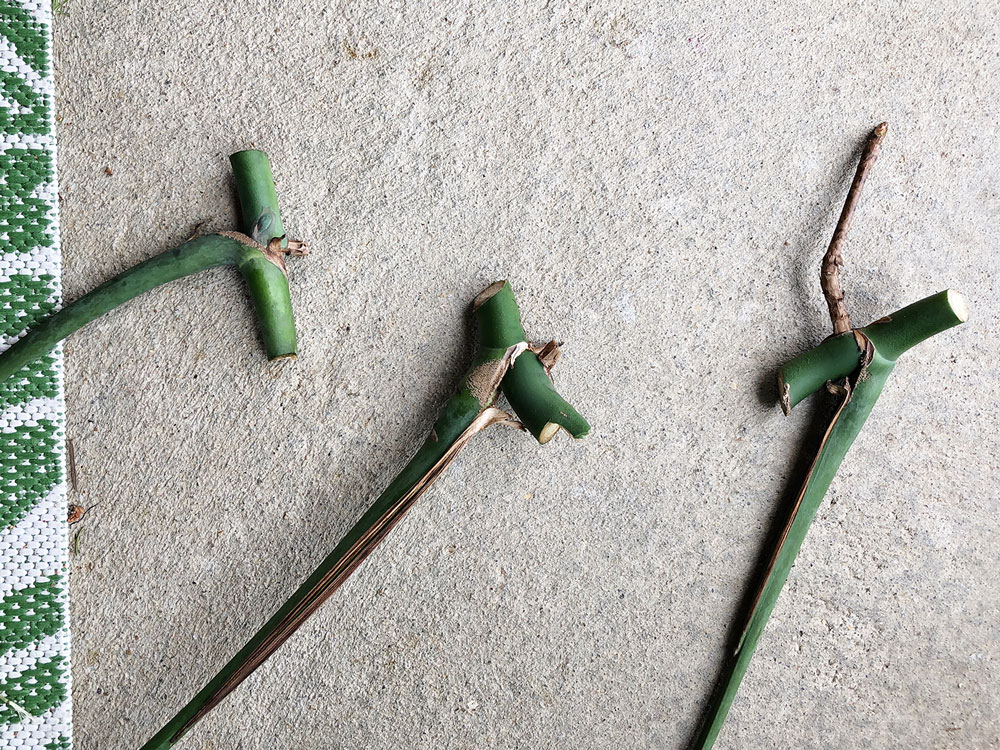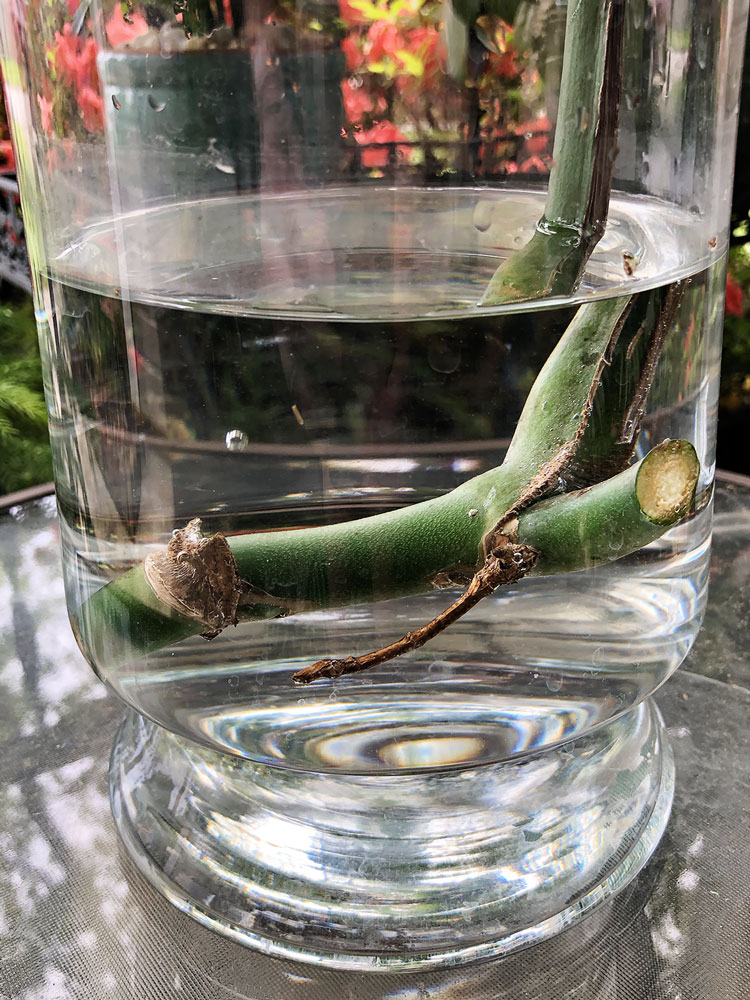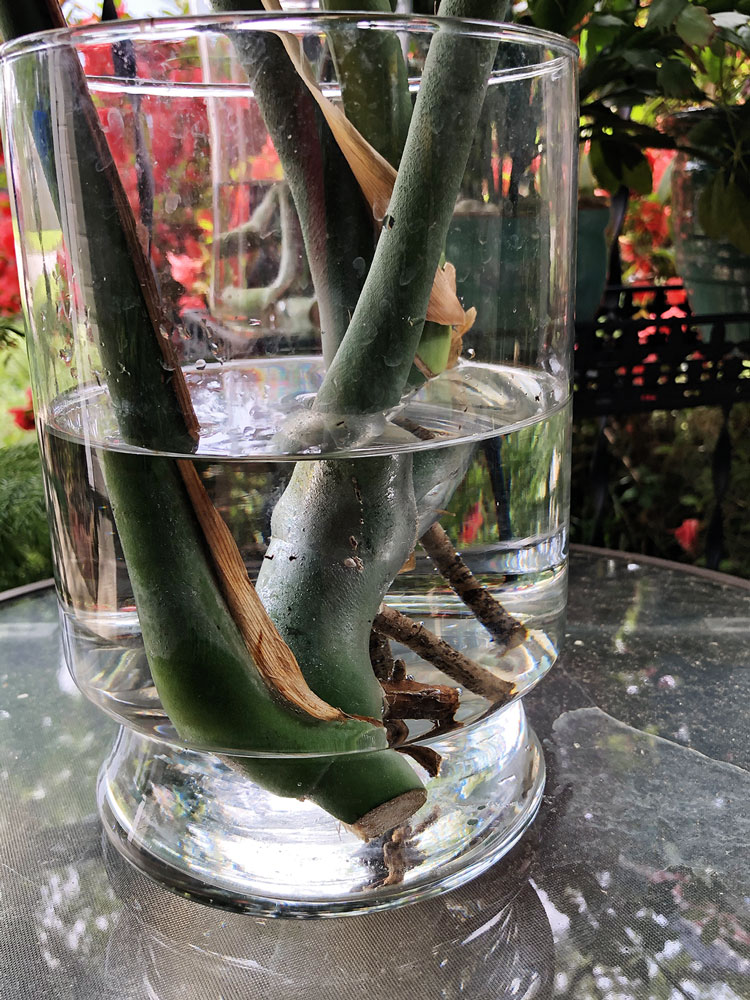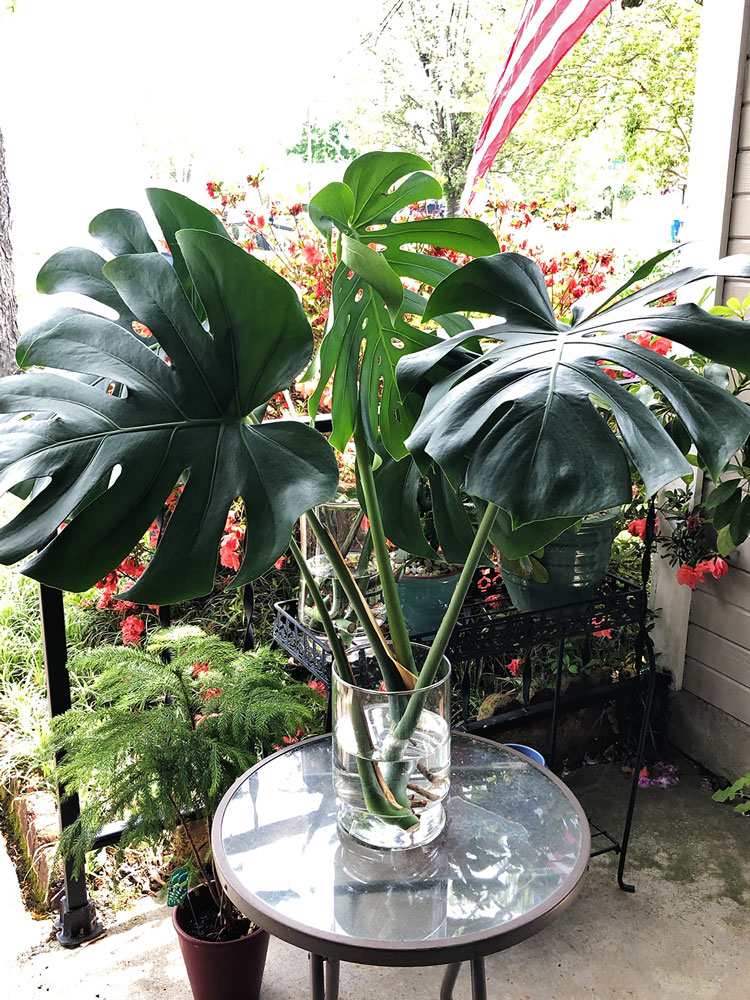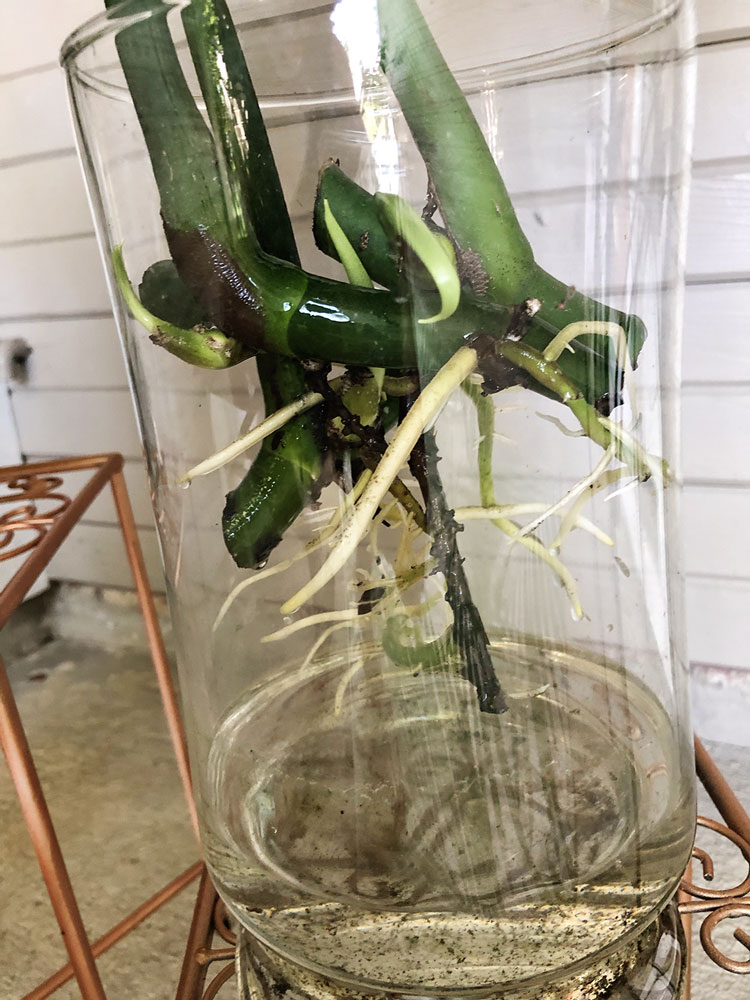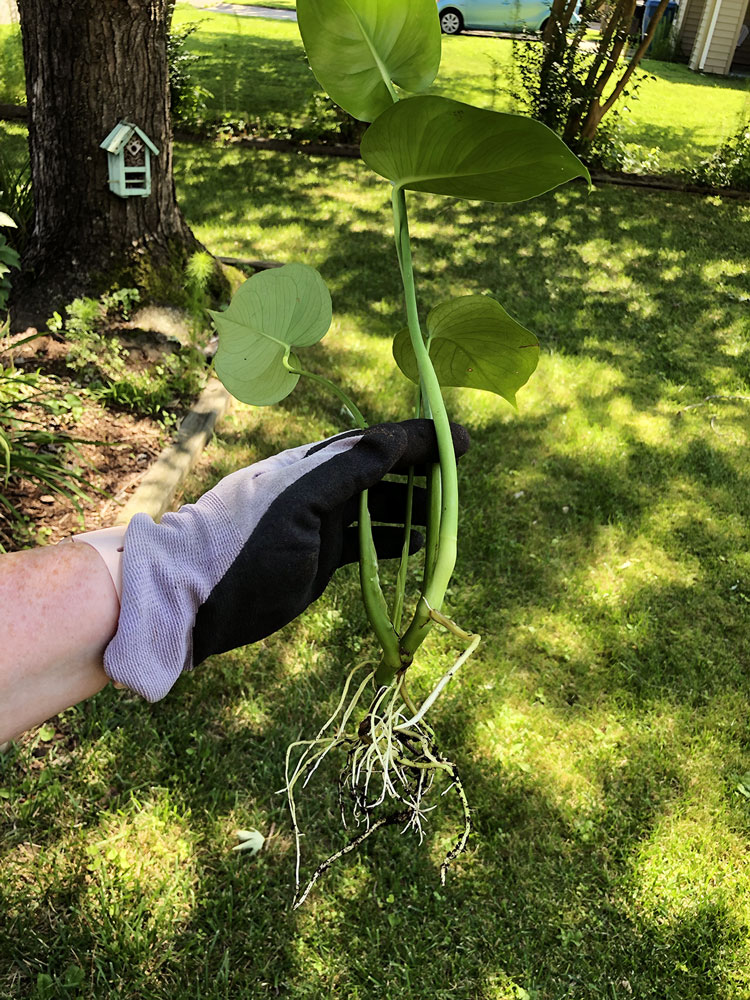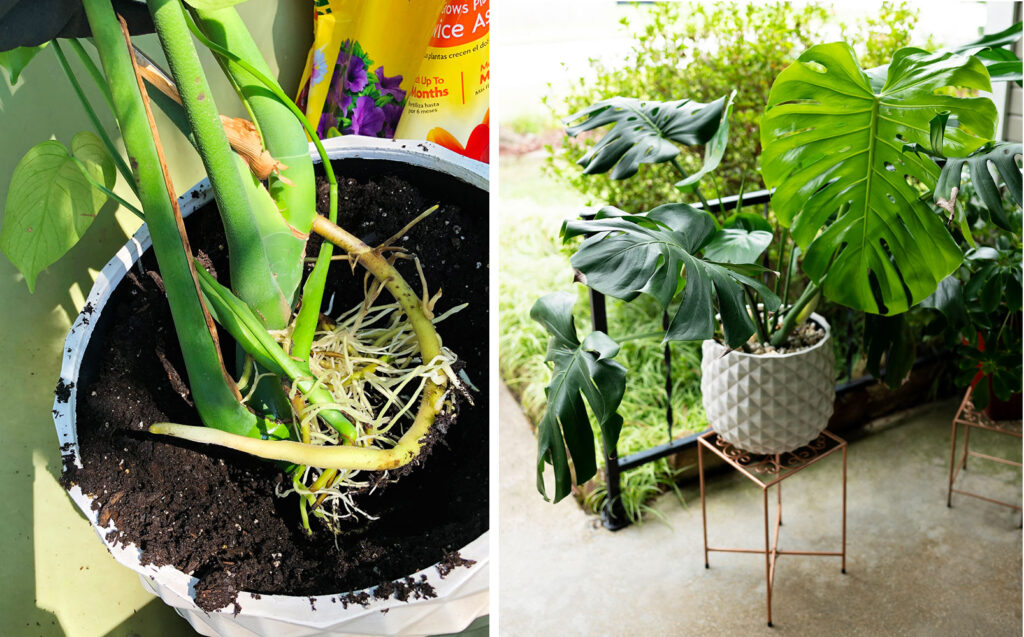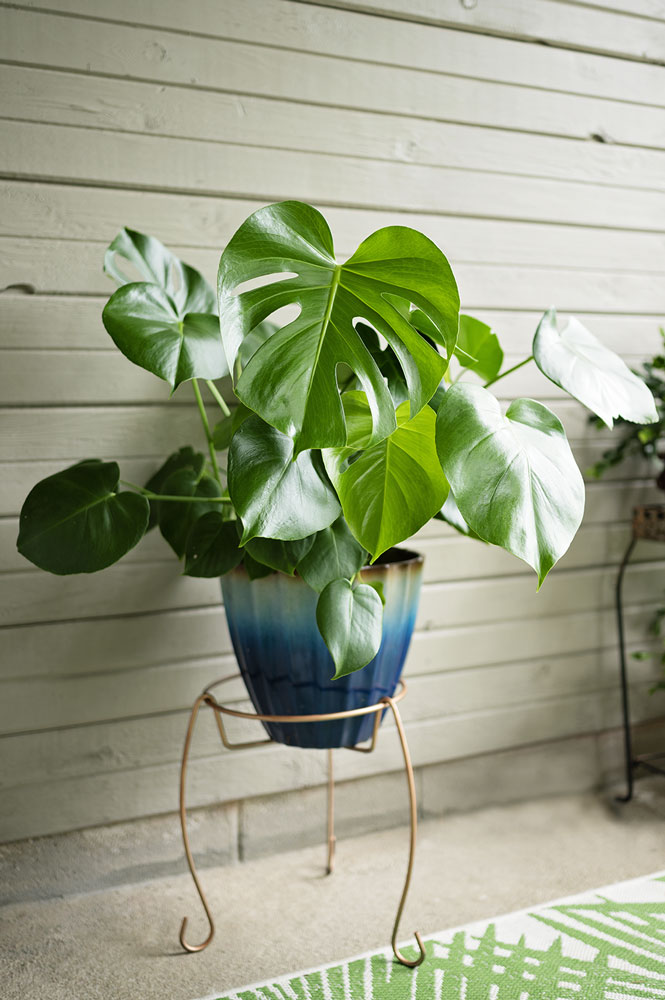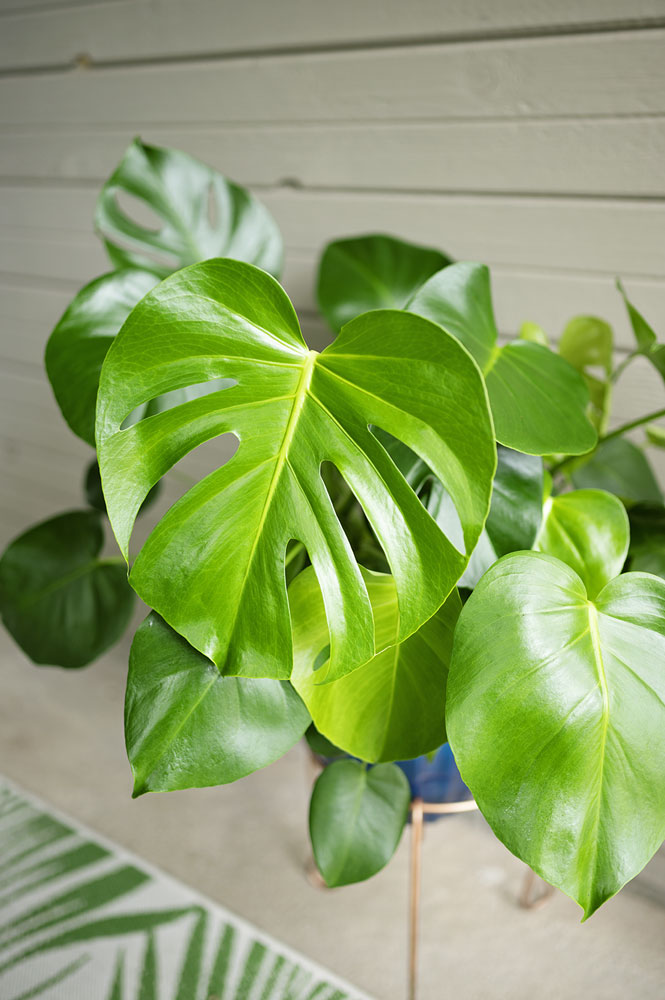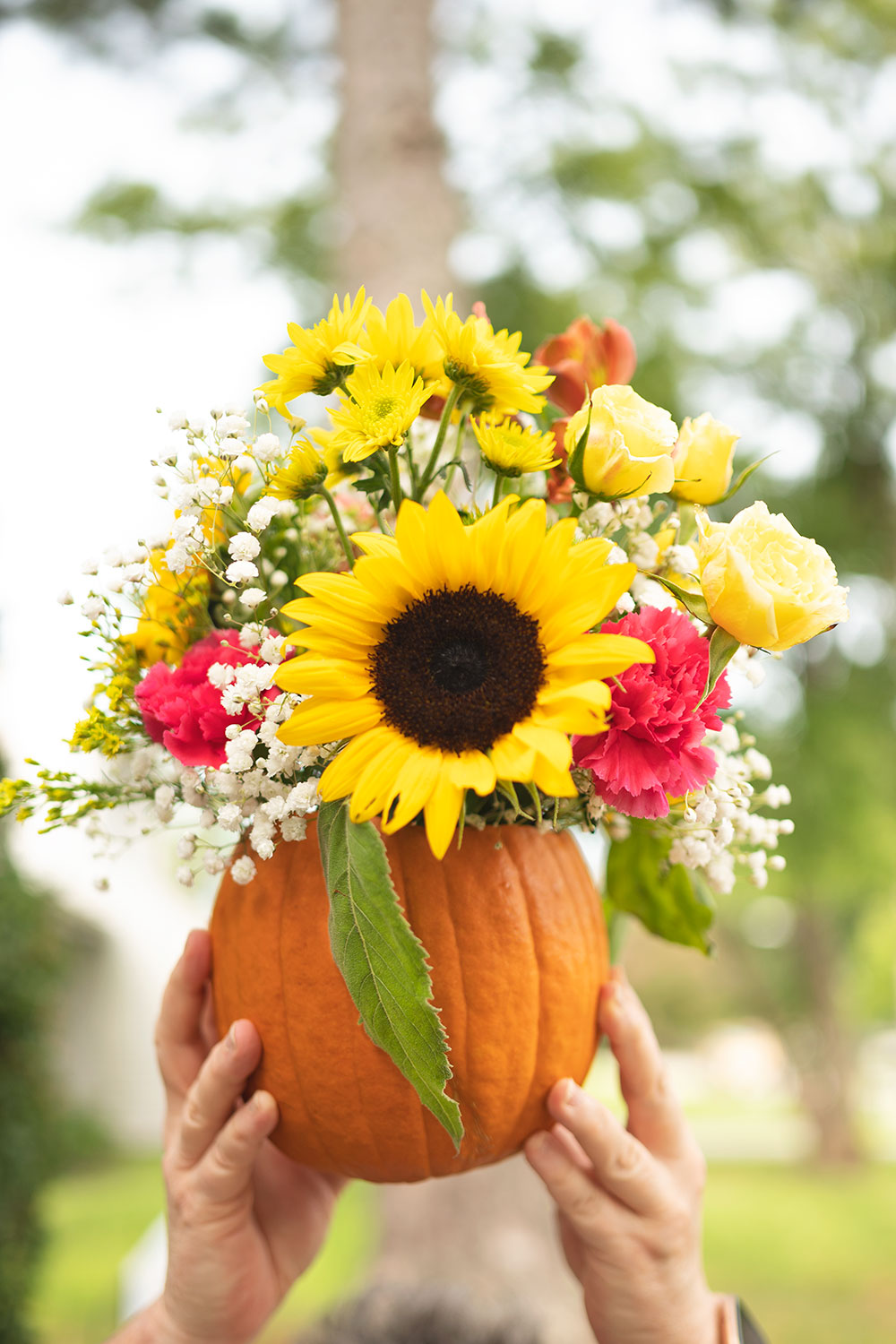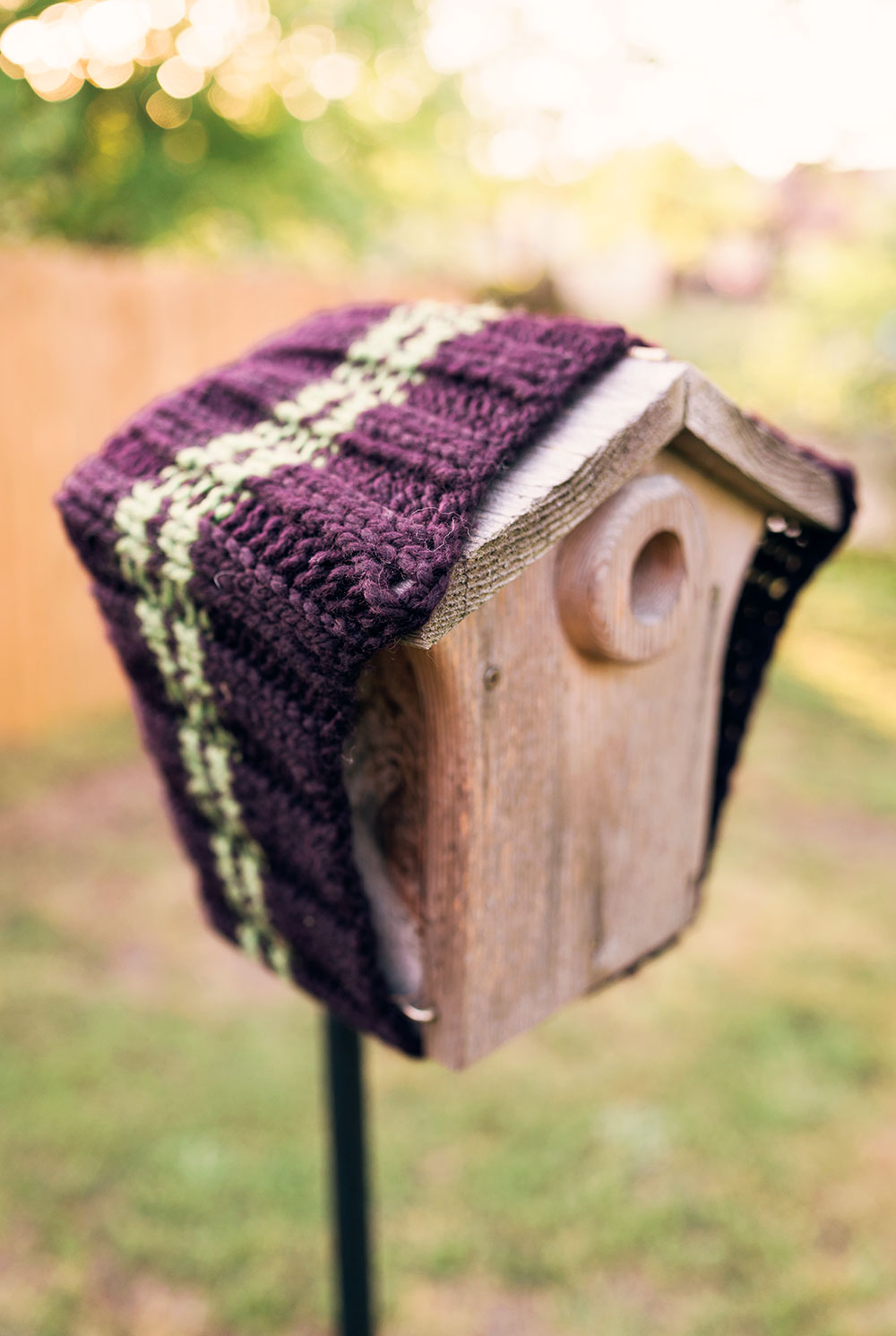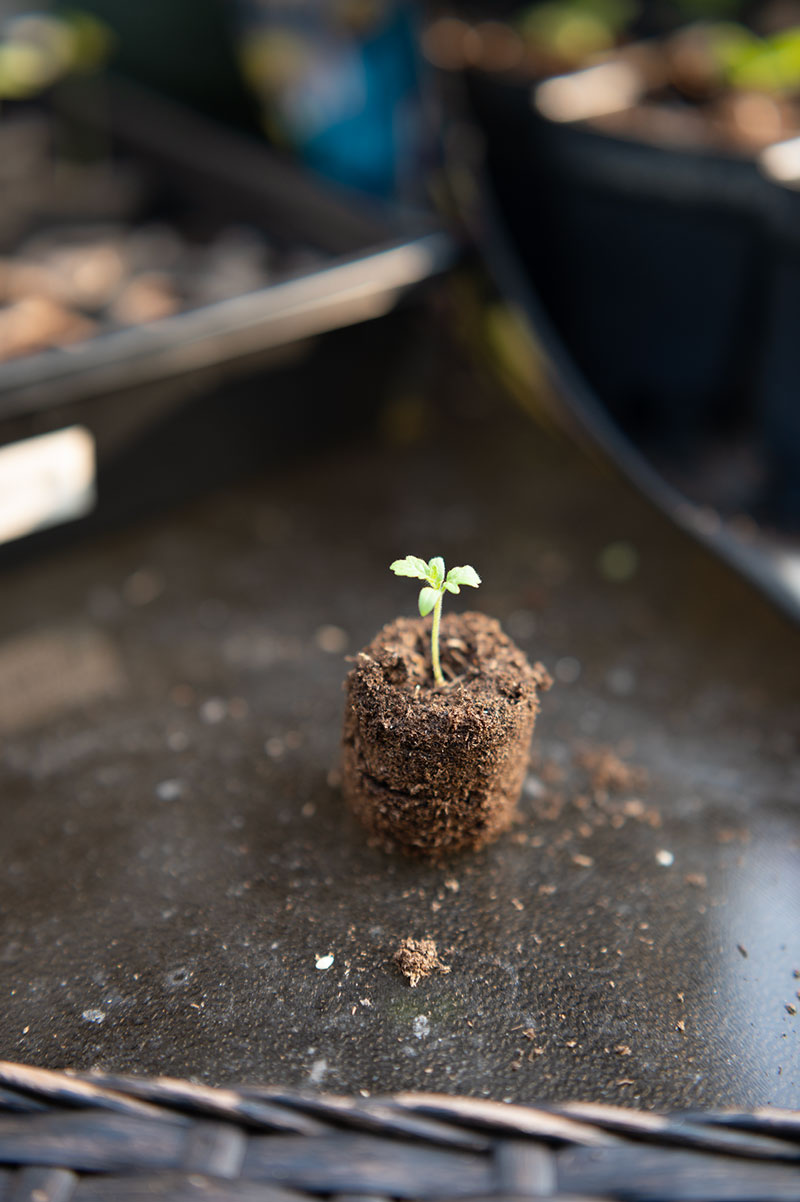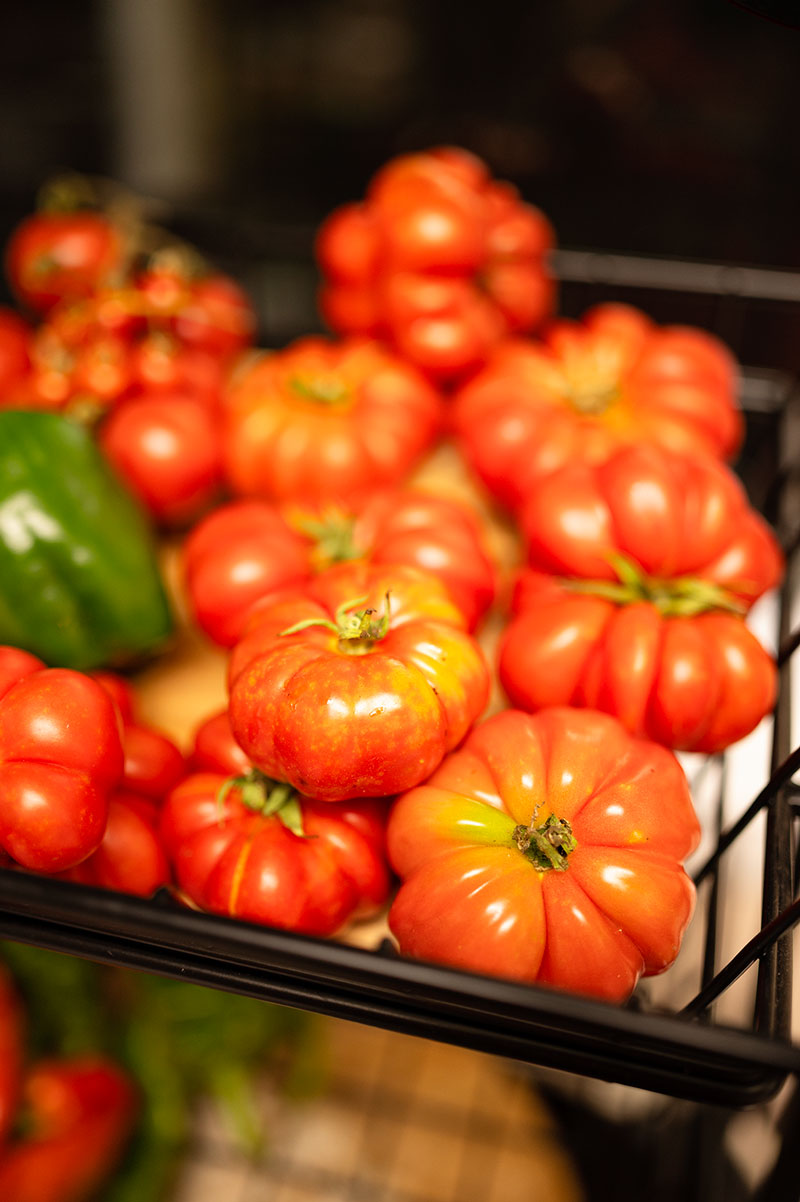How to Propagate Monstera
Learning how to prune and how to propagate monstera is very important if you decide to invite one into your home.
Few houseplants are as desirable as a lush, green Monstera plant. What most people don’t understand is that a Monstera Deliciosa is a very, and I mean VERY, fast growing plant. And while it’s low maintenance in terms of care requirements, it does take some finesse to keep it under control. Other wise it gets absolutely HUGE very fast, and will out grow a space or a planter in no time. If you have to prune it on a regular basis, wouldn’t you like to know how to propagate your Monstera, too? Wasting those beautiful leaves seems criminal if you ask me.
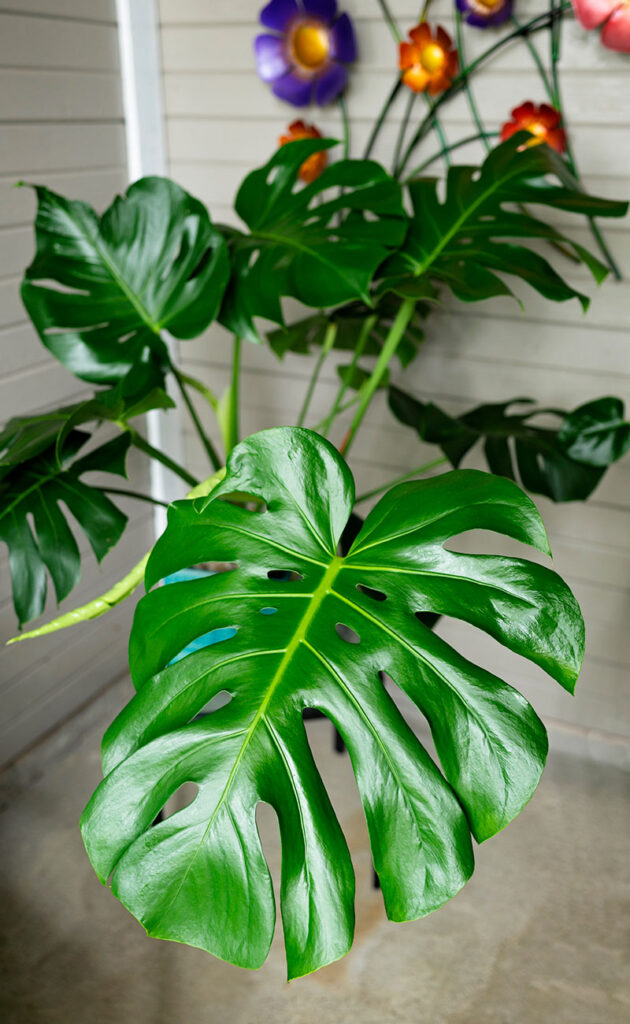
Don’t be afraid to prune your Monstera!
People are afraid to cut back their over grown Monstera plants, but they are so easy to propagate, and you wind up with leaves like this!
Let me walk you through the steps.
🌿
If you have one of these highly desirable Monstera Deliciosa plants in your possession, you understand all to well that this plant very quickly over grows its space and looks a lot like this.
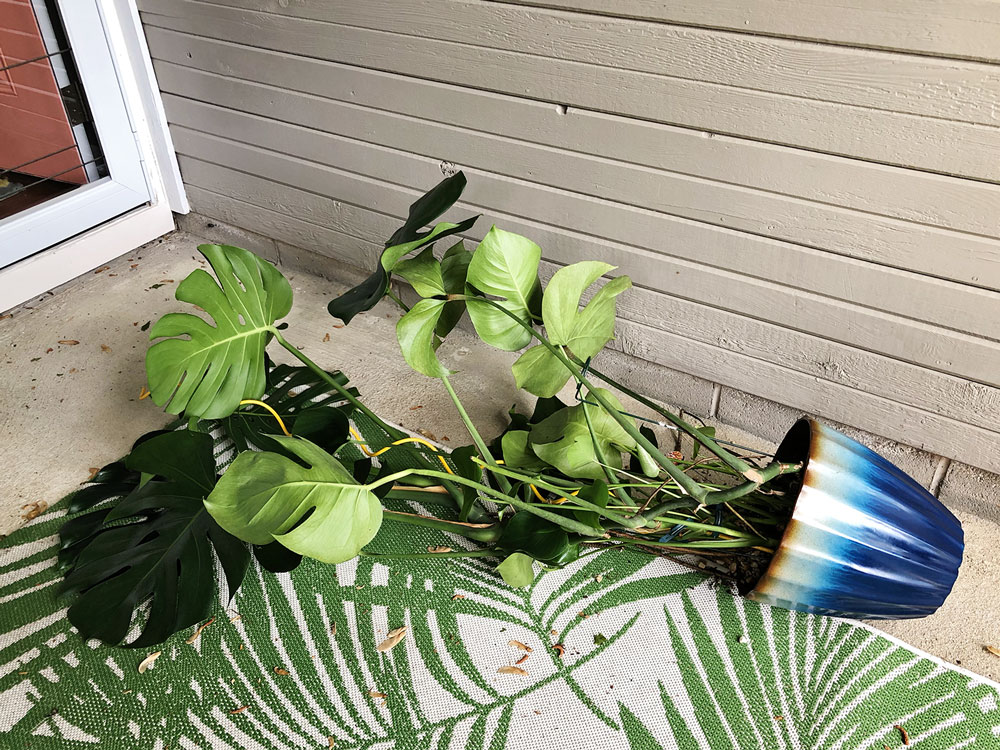
My Monstera was starting to tip over all the time, so I knew it was time to take drastic measures.
Yeah. This started happening over and over, so I knew it was time to give the plant a good haircut. The amazing thing is….I had trimmed this plant back 6 months earlier and grew several cuttings that wound up as gifts. I also planted a gorgeous planter with cuttings for myself. But by spring it was time for another big prune.
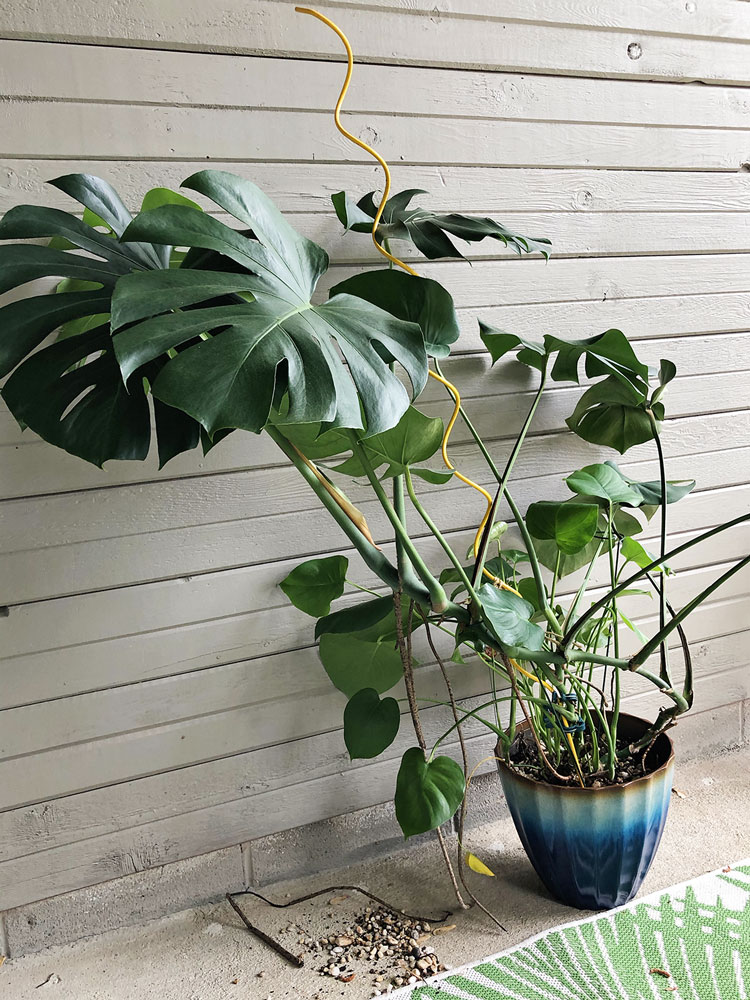
Top Heavy Monstera 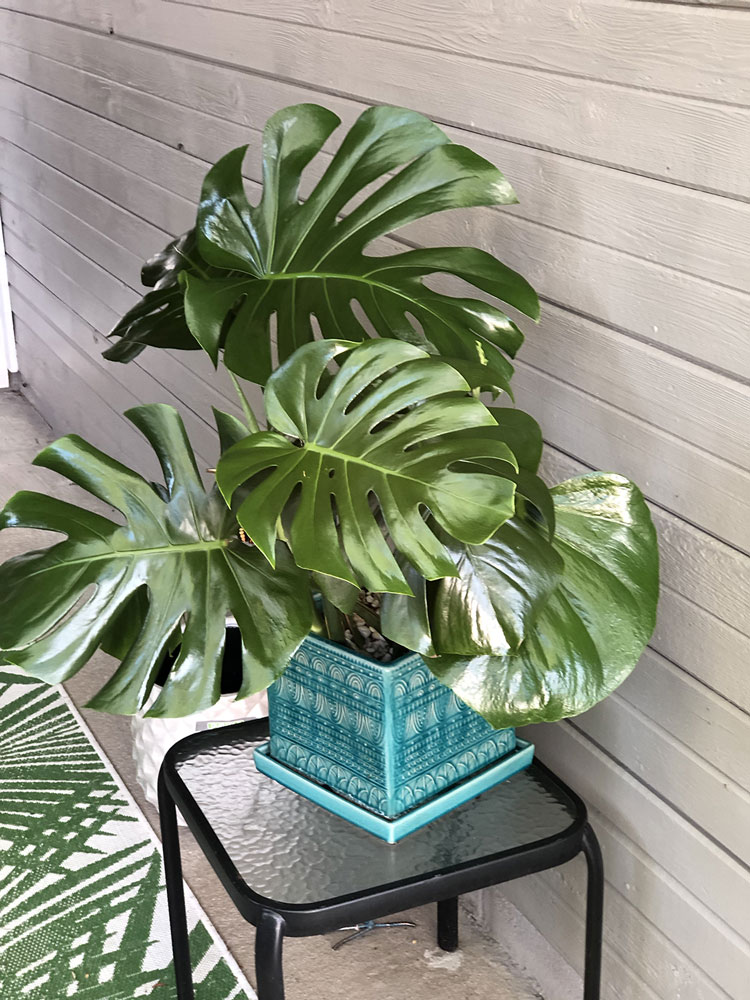
Monstera arrangement grown from cuttings
What does Propagate plants mean?
Propagating means to prune, or cut back plants and then grow new plants from the cuttings. The method I’ve always used is water propagation. Essentially, you take a cutting from the parent plant and place the cut end of the cutting in water. Over the course of a few weeks, the cutting starts sprouting new roots and at that time, the cutting is its own plant and can then be placed in a planter with soil.
There is a trick to getting your Monstera cutting to root and it begins with locating the nodes.
What’s a Node? It’s a swollen looking area just below where the leaf stalk exits the main stalk. So just cutting a Monstera leaf is a no go for a water propagation. You must capture the node as well.
Closeup view of the node on a stalk This section has 3 nodes which will be cut apart
Tips for Pruning Success:
- First off. Take a deep breath. It’s scary to cut up your beautiful plant. Believe me, I understand. But, you must understand that plants are very resilient, and pruning and repotting is an essential part of house plant care. You must be fearless.
- Pruning plants encourages new growth, so it’s important to work with the natural cycles. Prune in spring or mid summer when the plant is naturally growing and not in hibernation. Would you like someone to interrupt your nap and just start cutting your hair while you’re half asleep? I didn’t think so. It’s important to encourage the new growth that will occur after a good prune when the plant is already in a grow sequence and not in hibernation.
- Another benefit to pruning for propagation in the spring and summer is that it’s warm, and you can more easily take your plant outside to work on it. By the time I cut back the plant I used in this blog post, it was massive and needed to be laid on its side to figure out the best places to make the cuts. And I would prefer to sweep up the mess on my porch or in my driveway than to have topsoil and gravel spill all over my carpets.
- I use my kitchen scissors to cut back my plants, but I make sure to clean them before cutting. Just like us, plants can get infections from being cut with a dirty blade.
Let’s look at how our cut plants will look when they are ready for propagation.
The Long Stalk of leaves marked to show where to make the cuts Leaves cut apart with nodes in tact
Clear look at cut end of the cutting. The brown thing is an aerial root. I generally trim those back if they are long.
You’ve done the hard part! Cutting that beautiful plant is the hardest thing you’ll do as a plant parent, but it’s necessary to the ongoing health of your indoor plant. You can’t very well have it fall all over the place and out growing it’s pot. Learning to prune and propagate Monstera houseplants is a very important part of having one.
What’s next?
- Select a container for your cuttings. I have several tall, glass terrarium vases I bought over Christmases past to stack bulbs for forcing. They are wonderful for paper whites, for huge bouquets, and as it turns out, they are perfect for propagating Monstera cuttings.
- Arrange the cutting in your container and add enough water to submerge the nodes. It’s important the cut ends including the node are submerged in the water. I’ve seen a lot of people recommended filtered water, but I use mine straight out of the hose. I figure if I can drink and bathe in that water, the plant should be able to handle it, too.
- Place your cuttings in light conditions similar to where you would place the plant. Monstera plants grow at the base of trees in the wild. They can get 30 feet tall pretty easily in nature with leaves measuring several feet tall. They like bright but indirect light, and they love tropical conditions. I placed my cuttings on my covered porch where the plants live all summer.
- Change the water out at least once a week. Rinse off the submerged end and gently rub away the slimy coating on the end that’s been in the water. Rub the slime off the roots that are forming, too.
After 3-5 weeks, your cutting will have roots. It’s so rewarding to see roots sprouting from a cutting. The softer the stem, the faster the roots will form. Basil will start putting out roots in a week and pothos ivy takes 2-3 weeks. Monstera cuttings take a good month or more to sprout roots. Here’s what they will look like.
Healthy roots will look white. If your roots aren't white then they have probably suffered from poor drainage and will be brown which indicates root rot.(except for aerial roots which are always brown)
Roots coming in on large cuttings A smaller cutting with good root development
Now that you know to propagate Monstera, enjoy some tips for planting your Monstera Cuttings:
- A medium sized, heavy pot is best for planting Monstera. The plant gets top heavy pretty fast, so a (affiliate link) heavier weight ceramic pot with good drainage works best.
- Monstera is a striking plant, so I suggest pretty containers. (affiliate link) They do cost a little more, (affiliate link) but pots last forever if you take care of them, and your plants are such an important part of the home environment, shouldn’t their planters be special?
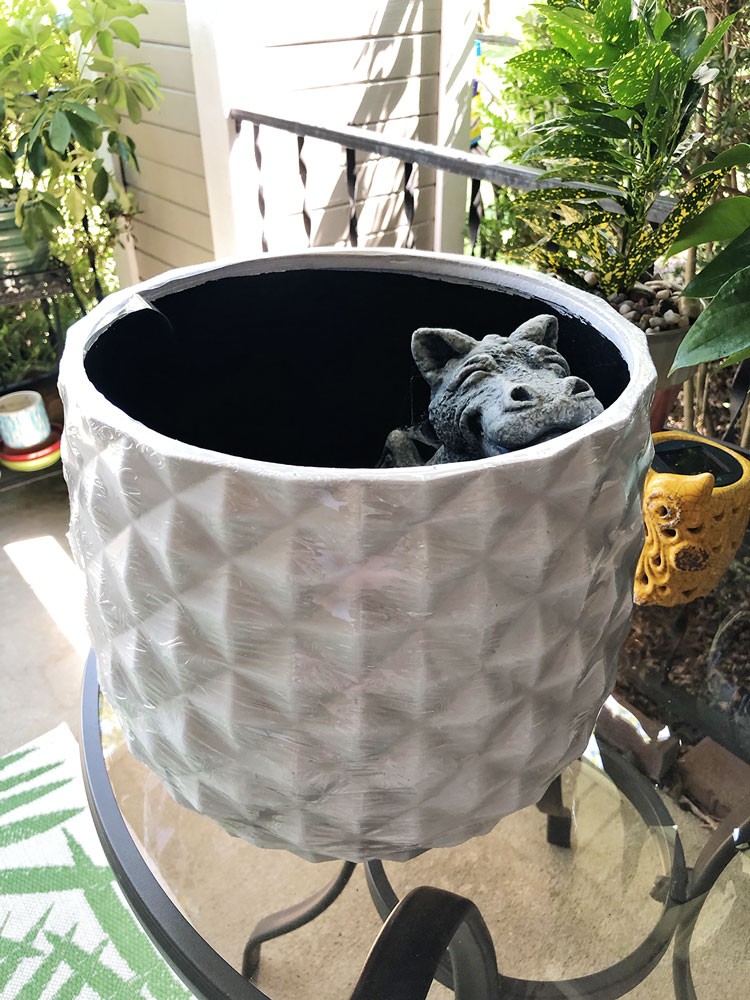
I picked up this striking planter pot in the garden section of my Home Depot.
It looks very fancy, but was around $30. It’s a heavy weight composite material, so it gives me a weighted base that the plant requires without being so heavy I can’t lift it. It also had a large drainage hole.
How to finish off the new plants derived from the propagated Monstera cuttings:
- Use a good potting soil designed for containers. I personally like Fox Farms potting soil. (affiliate link) It can be a challenge to find it, and it’s a little expensive. Definitely use potting mix for containers as it will drain better than garden soil which is too dense for container gardening.
- Place your soil in the container without hard packing it down. It should be pretty loose.
- Set the plant, roots down, into the soil and cover with extra soil. Don’t over pack the plant. The surrounding soil should provide enough structure to hold the plant in place, but don’t pack it too tightly. Roots need space to breath.
- Place the freshly potted plant in a spot with light and temperature conditions it prefers. Monstera likes bright, indirect light, so a covered porch is ideal in the summer. I live in a southern coastal town, so the tropical humidity makes for very happy houseplants.
Rooted cutting and final plant 2 months later in container
The last question is generally, what happens to the original plant that provided the cuttings?
In my case, the original plant didn’t look so good once I removed the long stalk, the vine, that held all the large leaves. To be honest, I considered throwing it out, because it looked pretty awful. I put the potted plant in my front flower bed and barely touched it all summer.
Then I noticed all the places where I had made cuts were sprouting multiple new leaves. I pruned the plant once again and placed it on the front porch with the larger plants, and I’m happy to report the original plant is growing like crazy! It’s completely filled in and looks amazing, so I will definitely be keeping the original plant along with the cuttings. The leaves are smaller and mostly they are the solid, heart-shaped philodendron leaves, though as the season progresses, the desirable split leaves, the defenestrations, are starting to appear.
The only cautionary tale I can share with you is that to prepare yourself for an onslaught of large houseplants! Make sure you have the space to accommodate them, and finding a few plant loving friends is a good idea. My one small Monstera purchase has turned into FIVE separate plants now. And that’s after giving several rooted cuttings away. I suppose if you do it right, learning how to propagate monstera cuttings could become a small business at some point.
I absolutely LOVE my beautiful Monstera collection, and have found it’s a very easy plant to keep and grow. Stay tuned for information on how to care for them as an indoor plant. I bring them in sometime every October. As a tropical plant, they need night time temperatures to remain above 55° F.

Hi I’m Pattymac
Sewist, Maker, Baker, Plant Mom
I’m a creative lifestyle blogger living and working in Coastal Virginia. When I’m not mixing or stitching or taking pictures, I’m out exploring the cook book section of my favorite library or munching my own home baked cookies at a mid week movie matinee.


